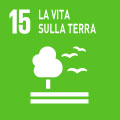- Docente: Rossella Breveglieri
- Crediti formativi: 3
- SSD: BIO/09
- Lingua di insegnamento: Inglese
- Moduli: Annalisa Bosco (Modulo 1) Michela Gamberini (Modulo 2) Rossella Breveglieri (Modulo 3)
- Modalità didattica: Convenzionale - Lezioni in presenza (Modulo 1) Convenzionale - Lezioni in presenza (Modulo 2) Convenzionale - Lezioni in presenza (Modulo 3)
- Campus: Bologna
- Corso: Laurea Magistrale a Ciclo Unico in Medicine and Surgery (cod. 9210)
-
Orario delle lezioni (Modulo 1)
dal 04/03/2025 al 18/06/2025
-
Orario delle lezioni (Modulo 2)
dal 06/05/2025 al 27/05/2025
-
Orario delle lezioni (Modulo 3)
dal 03/04/2025 al 15/04/2025
Conoscenze e abilità da conseguire
The student will familiarize with the experimental approaches used in laboratory to study brain and beaviour. The course will guide the student from basic knowledge about brain organization to recent discoveries, in particular on the eye-hand coordination necessary to interact with the environment. The main experimental approaches described are neurophysiology, functional neuroanatomy and psychophysical experiments. The course will include some hours of practical activities in a kinematic lab.
Contenuti
Module 1
Psychophysical approach to the study of visuomotor behavior
This module introduces the students to psychophysical experiments. In particular:
1) Visual illusion studies
2) Kinematic of reaching and grasping movements
3) Eye movement recordings and studies of oculomotor control
This module includes a lab experience.
Module 2
Introduction to functional neuroanatomy underlying visuomotor behaviour
This module emphasizes the structure and functions of the primate brain, with a special emphasis on occipito-parietal and premotor cortices involved in sensorimotor processing with laboratory-based discovery.
In particular, the module introduces the students to:
1) histological and structural features of neurons and neocortical organization;
2) use of interactive digital media to explore the anatomy of the central nervous system;
3) overview of principal cortical networks involved in sensorimotor processing.
Module 3
Neural studies of visuomotor behaviour
This module describes the recentmost discoveries of the neural bases of eye-hand interactions. In particular, it presents:
1) examples of neural coding of the most skilled actions performed with our hands
2) neural circuits involved in visuomotor behavior and other cognitive functions.
Testi/Bibliografia
Scientific papers related to the topics of the course will be provided to students.
Metodi didattici
Frontal lessons and a lab experience.
Modalità di verifica e valutazione dell'apprendimento
Students who will attend (with signature) at least 70% of the frontal lessons can choose to take the test as an oral 10-minutes presentation of a scientific paper related to the topics of the course. The paper must contain an original research. Reviews are not accepted to be presented.
Students who will not attend at least 70% of the frontal lessons will take the test as an oral test with 2 questions chosen by the professors among the topics of the program.
Lab activities are compulsory in any case.
At least 1 week before the day of the presentation, students must send the chosen paper to one of the three professors for their approval.
On the day of the exam, all students who want to take the exam must be in the room at the time indicated on almaesami. Students who do not respond to the register call or who do not delegate someone to answer on their behalf will be removed from that day's list. For students enrolled in the list who do NOT want to take the exam, it will be sufficient NOT to show up on the day of the exam (in other words, unregistration from the list of almaesami is good practice but NOT mandatory).
Strumenti a supporto della didattica
Powerpoint. VICON Motion-tracking system. Matlab. MRIcron, CARET and other open source platforms for 3D visualization of brain structures
Orario di ricevimento
Consulta il sito web di Rossella Breveglieri
Consulta il sito web di Annalisa Bosco
Consulta il sito web di Michela Gamberini
SDGs



L'insegnamento contribuisce al perseguimento degli Obiettivi di Sviluppo Sostenibile dell'Agenda 2030 dell'ONU.
